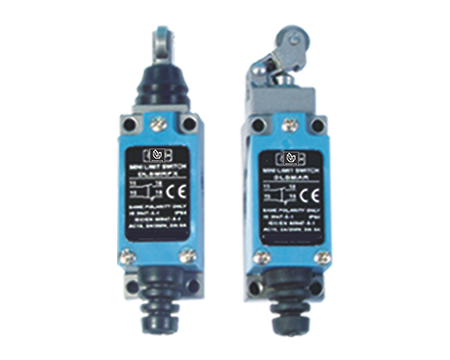In today’s fast-paced industrial world, automation drives efficiency, safety, and productivity. From huge factories turning out cars to warehouses sorting packages at lightning speed, machines do more heavy lifting. But behind every smooth operation is a network of silent heroes and small devices that ensure everything runs like a machine. Enter limit switches, the quiet guardians of industrial automation, keeping systems precise, safe, and reliable.
Limit switches are simple yet powerful tools that help machines know when to act—stopping their conveyor belt, opening a valve, or halting a robot arm. These devices are indispensable for businesses aiming to streamline operations and cut costs. This article explains how switches work and why they’re a core of the modern industry. We’ll also explain how BCH Electric Limited’s limited limit switches can elevate your automation game.
How Limit Switches Work: The Basics
Limit switches are electromechanical devices that detect an object’s presence or position. When triggered, they send a signal to the control system, telling it to start, stop, or adjust a process. Imagine a conveyor belt in a factory: a limit switch senses when a box reaches the end and signals the belt to pause, preventing a pile-up. These switches are built tough to handle industrial settings, from dusty cement plants to humid food processing units.
Core Components of a Limit Switch
Every limit switch has a few key parts that make it tick:
- Actuator: The part that makes physical contact, like a lever or roller.
- Switch Body: Houses the electrical contacts that open or close to send signals.
- Terminals: Connect the switch to the control system for seamless communication.
Common Types of Limit Switches
Limit switches come in various forms to suit different tasks.
- Lever Switches: Ideal for detecting objects moving in a straight line, like on a conveyor.
- Plunger Switches: Perfect for vertical or confined spaces, like machine presses.
- Rotary Switches: Built for rotating equipment, such as valves or gears.
- Whisker Switches: Sensitive to the light touch, suitable for delicate applications.
- Cable-Pull Switches: Used for emergency stops along long conveyor lines.
- These options make limit switches versatile enough to fit almost any automation need.
Why Limit Switches Are Essential for Industrial Automation
Limit switches are the backbone of automated systems, delivering precision, safety, and efficiency. They’re like lights in a factory, directing machines to act at the right moment. Here are seven ways they supercharge industrial automation:
- Enhanced Safety: They prevent accidents by stopping machines at critical points, such as stopping a crane before it overextends.
- Improved Precision: They ensure tasks happen exactly where they should, such as positioning a robotic arm for welding.
- Increased Efficiency: They automate repetitive actions, reducing manual labor and speeding up processes.
- Durability in Tough Conditions: Designed to resist dust, moisture, and extreme temperatures.
- Cost Savings: Fewer errors and breakdowns mean lower maintenance and downtime costs.
- Versatility: They work in countless applications, from packaging to power generation.
- Reliability: Built to perform consistently, even in high-vibration environments.
For instance, in a bottling plant, limit switches ensure caps are applied only when bottles are in place, avoiding spills and waste. This kind of precision is why industries can’t do with it.
Applications of Limit Switches in Industry
Limit switches shine in various settings, proving their worth across sectors. Here are five key industries where they make a difference:
- Manufacturing: Control robot arms and assembly lines for precise part placement.
- Material Handling: Manage conveyor belts and sorting systems in warehouses.
- Energy: Monitor turbine positions in power plants for safe operation.
- Automotive: Ensure accurate positioning in automated welding and painting processes.
- Food and Beverage: Control filling and packaging on hygienic, high-speed lines.
These examples show how limit switches adapt to diverse needs, keeping operations smooth and safe.
How to choose the right limit switch for your application
Selecting the appropriate limit switch can feel daunting, but it’s all about attaching the device to your system. Here are nine tips to guide your decision.
- Assess the Environment: Dusty, wet, or hot? Ensure your switch is water-resistant by choosing one with the right IP rating, such as IP67.
- Understand the Motion: Pick lever switches for linear tasks or rotary switches for rotating parts.
- Check Electrical Specs: Ensure compatibility with your system’s volt system’s current.
- Consider Actuator Type: Levers work for broad contact, while plungers suit tight spaces.
- Prioritize Durability: Look for rugged materials like stainless steel in harsh settings.
- Evaluate Maintenance Needs: Opt for easy-to-inspect and replace designs.
- Test Compatibility: Confirm the switch integrates with your control system, like PLCs.
- Plan for Redundancy: Use multiple switches for critical safety functions.
- Consult Experts: Work with suppliers like BCH Electric Limited for tailored advice.
Following these steps, you’ll find you’ll switch that fits like a glove, boosting your automation’s automation’s
Maintaining Limit Switches for Long-Term Success
Regular care is key to keeping limit switches working flawlessly. Here are three maintenance must-dos:
- Routine Inspections: Check for wear, misalignment, or dirt buildup every few months.
- Clean Carefully: Use the proper methods to remove dust or grease without damaging parts.
- Test Regularly: Verify the switch triggers correctly to avoid unexpected failures.
Performing proper maintenance extends the switch life, saving you costly replacements.
The Future of Limit Switches in Automation
As automation evolves, so do limit switches. The latest advancements make them brighter and tougher. Here’s one expert’s trend to watch:
IoT Integration: Modern limit switches can connect to the Internet of Things, sending real-time data to monitor performance and predict maintenance needs.
This shift will make limit switches even more valuable, helping businesses stay ahead in a connected world.
Partnering with BCH Electric Limited for Automation Excellence
Limit switches are small devices with a significant impact. They drive safety, precision, and efficiency in industrial automation. They keep systems running smoothly, from factories to warehouses, saving time and money. As industries push for smarter, faster operations, limit switches will remain a critical piece of the puzzle.
BCH Electric Limited is proud to offer premium limit switches built to meet India’s tough industrial challenges. Pair them with our Miniature Circuit Breakers (MCBs), designed to protect your electrical systems with high breaking capacity and compact reliability. Together, they create a powerful solution for all your automation needs. Ready to take your operations to the next level? Contact BCH Electric Limited today or explore our full range. Let’s build a brighter future together.


